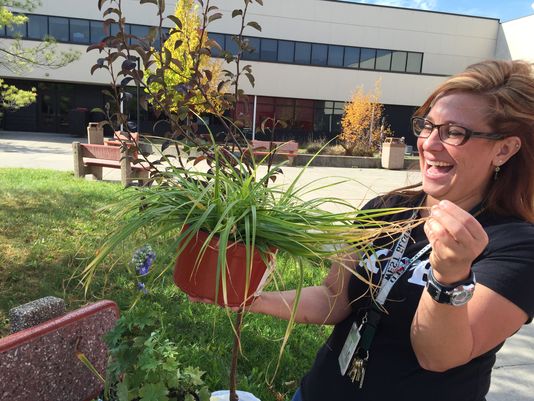School creates garden using the plants from the greats of American literature

One of the most exciting and uplifting stories I heard at the NAAEE conference came from a session titled 'Greening the Literature Classroom'.
Jennifer McQuillan is an English literature teacher at West Bloomfield High School in the suburbs of Detroit, Michigan. Her classroom has white walls, no windows and fluorescent tube lighting - it is a great environment to study One Flew Over the Cuckoo's Nest; it isn't terribly good for anything else! Last year, Jennifer hit upon a brilliant new way to help her pupils connect to the great works of American Literature.
Henry David Thoreau's 'Walden or Life in the Woods' is especially hard to connect to in an enclosed, sanitised classroom. For years, Jennifer has taken her pupils to a small wooded area on the edge of her school's grounds. She takes her pupils outdoors as often as possible, it revitalises them and brings to life a little bit of Thoreau's writings. The connection to the man himself is still quite loose though; what Jennifer struck on next is an idea that has had an incredible life of its own.
Over a period of just 18 months, Jennifer and her pupils with support from parents and fellow teachers have created an incredible American Literary Garden - they've named it Walden at West Bloomfield. The garden is filled with plants that give pupils a direct link to the great authors. The plants are not just the same species as those found in the gardens of Emily Dickinson, F.Scott Fitzgerald and Harriet Beecher Stowe; they are the actual plants, or at least cuttings taken from plants growing in the places these authors lived in or wrote about. Over thirty authors are now represented. There is a Hydrangea transplanted from outside Kurt Vonnegut's cottage door in Cape Cod, Wisteria from Mark Twain house, while Hemingway and Steinbeck are represented by mint and calla lily respectively.
At the NAAEE conference Jennifer explained how the garden is used in her teaching, one great example comes from the study of Edgar Allen Poe. The Fall of the House of Usher is a short story about a haunted character, Roderick Usher, who is struggling to deal with the loss of his sister. In describing the house and its impact on Usher's mental state, Poe twice mentions the Sedge plants growing in his gardens. Jennifer helps her children to understand why Poe references Sedge as he sets the scene for the story. Rather than describing sedge in the classroom, she now takes her pupils out to the literary garden to gently handle Poe's Sedge plant. They quickly discover how Sedge is prickly and uncomfortable to the touch. This allows Jennifer to ask her pupils why they think Poe introduced a 'few rank sedges' on page three of his story. In this way they discover the power of metaphor in an incredibly powerful and memorable way.
This student's experience of 'Walden at West Bloomfield' is a great testimony to the power of what Jennifer McQuillan is doing. It is an inspired approach.
For a fully referenced version of this article please visit: http://www.morganhopephillips.com/blog/2016/11/2/walden-at-west-bloomfield

